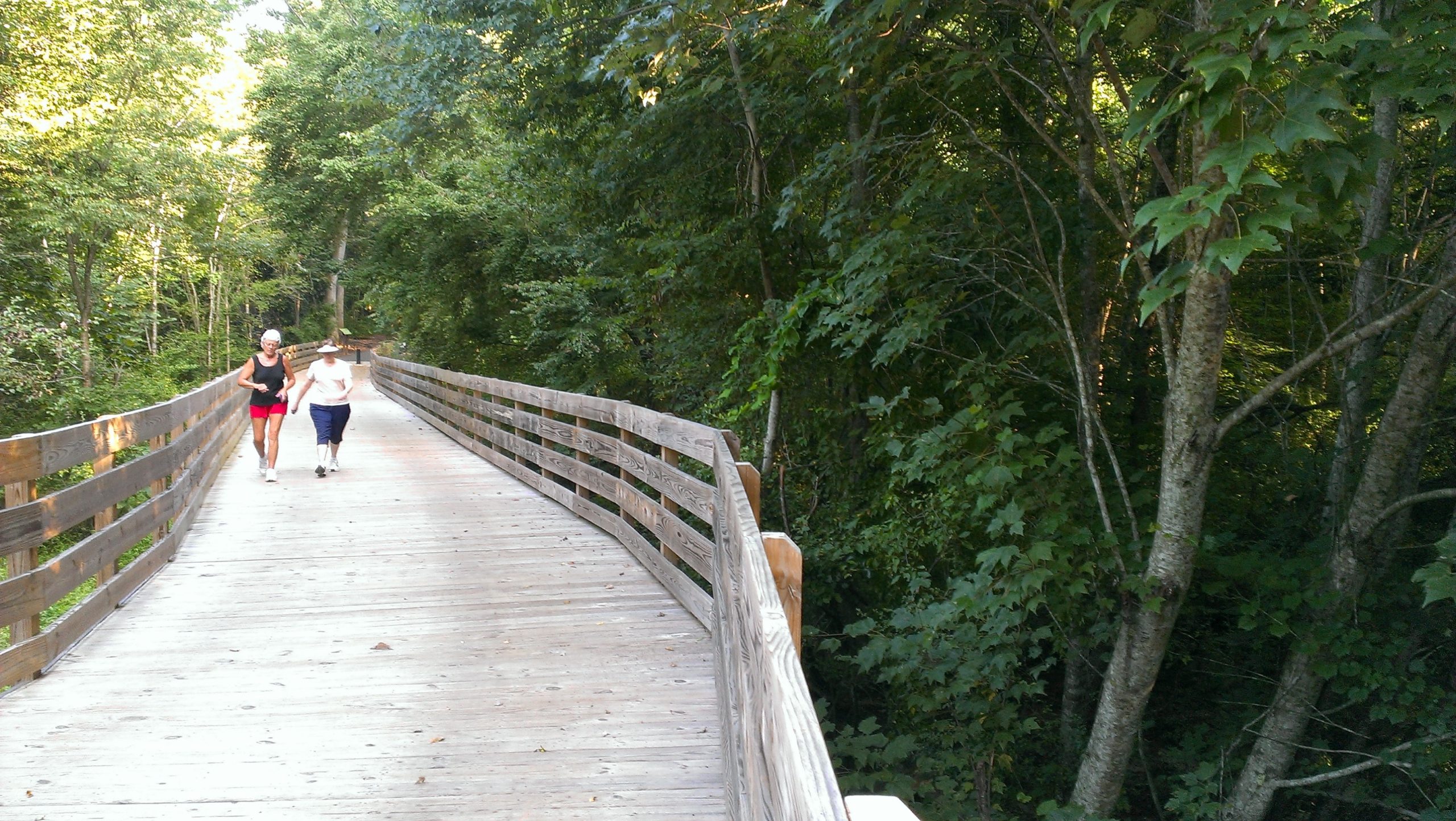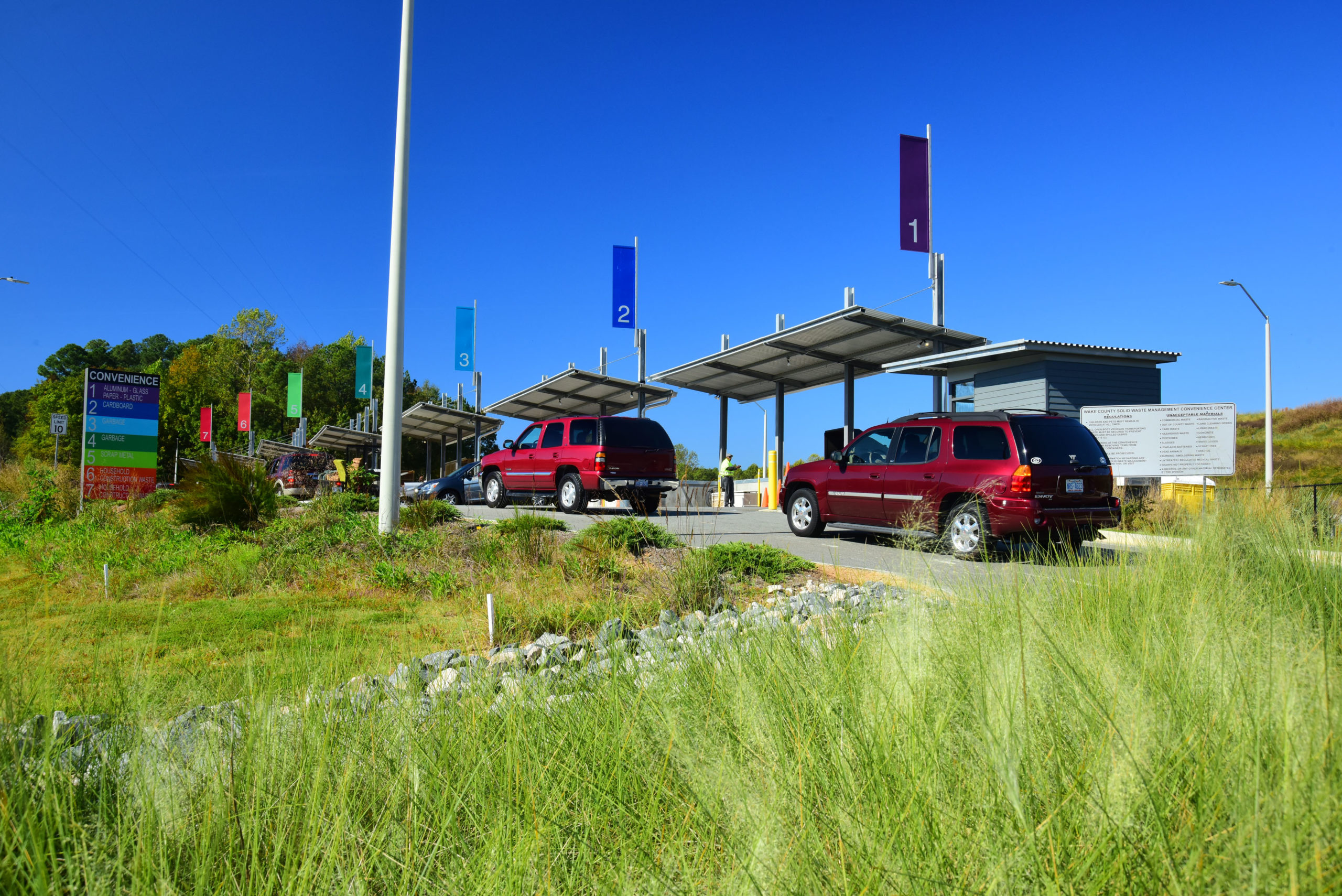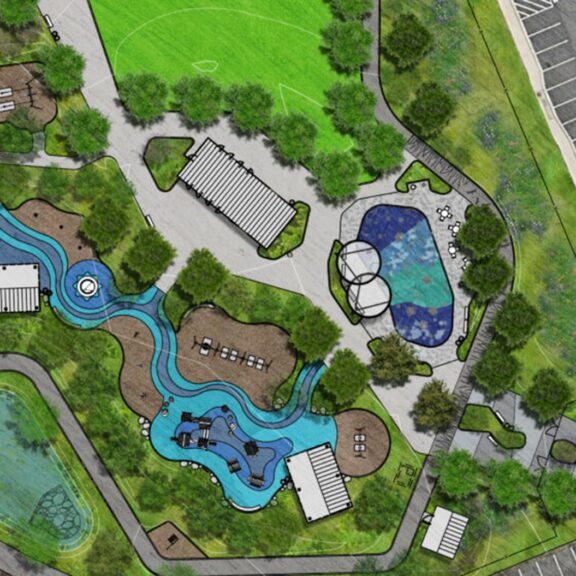While works of landscape architecture surround us every day and include some of the most engaging spaces we experience, the growing diversity of the profession has resulted in some common misconceptions. To alleviate this, we consulted the experts: three members of our Landscape Architecture team in Raleigh. With a combined 55+ years of working in the industry, Brian Starkey, Lauren Dickson, and Jon Blasco shared their perspectives on the following five myths they’ve heard throughout their careers.
Myth: Landscapers & landscape architects do the same job.
In 1899 when the profession of landscape architecture was formalized and the American Society of Landscape Architects was founded in the United States, “landscape” meant the combination of land, buildings and vegetation within an overall environmental and cultural context. In today’s world, when someone hears the term landscape, they might think about the brown spot in their lawn or the need to prune back their shrubs. While landscape architects may have some advice to offer, these types of tasks are typically handled by a landscaping company, who are experts specifically in landscape maintenance services for residential and commercial properties.

Coaches’ Corner at North Carolina State University
Myth: Landscape architects are master gardeners.
Trees. Shrubs. Grasses. Flowers. These are important tools in the landscape architect’s toolbox. Understanding plants and how they help define space, elicit emotion and soften the harshness of the built world is one of the many things that set us apart from other design disciplines. But are we master gardeners? Can we identify every tree in the woods? Do our personal landscapes stand out from our neighbors? Sure, there are some landscape architects who fit this description to a tee.
However, landscape architecture is much more than being a master gardener. Being a landscape architect is understanding not only plants, but how people use a space, how vehicles move through a city, how to build things, how stormwater moves across a site, and how to manipulate the earth to create experiences. Our team is unique because each of our landscape architects brings a different and unique skillset that they are experts in. For some it’s horticulture. For others it’s signage, lighting, construction administration, master planning, parks and recreation, stormwater, etc.
Landscape architects are in the business of creating experiences and spaces by blending science and art. Yes, an understanding of plants is an important tool that we employ in our design process. But like a carpenter, plants are just one of many tools on our work bench.

White Deer Park, Garner, NC
Myth: Landscape architects only design plant beds and parks.
If it’s outside the building, there is a good chance that a landscape architect designed that space. The types and breadth of projects we work on are vast. From the obvious projects such as residential backyards and public parks to the not-so-well-known projects, landscape architects have touched it all.
One might be surprised to hear that a landscape architect took part in the design of a downtown multi-modal streetscape or a public plaza at the base of a skyscraper or a stormwater control and management device next to your local strip mall or even the recreational areas at your apartment complex. Would you be surprised to hear that a landscape architect might have also designed the recycling collection facility in your community? Or what about the gas station down the street? Or the solar farm in a rural county?
There is a good chance that a landscape architect was involved with the latest school project, and probably the greenway that connects the new school to a local park. If it’s outside and part of the built environment, it’s likely that a landscape architect was involved in the project.

North Wake Landfill Convenience Center
Myth: The value of the landscape lies solely in the aesthetic of the plants.
The value of the landscape is something that historically most people don’t put a lot of thought into beyond aesthetics, but it is becoming more at the forefront of our conversations. The landscape affects how we, as humans, interact with spaces as well as our natural environment. Studies have shown that landscapes can reduce our stress, aid in curing certain ailments, and even improve academic performance.
Landscape architects design spaces that are not only valuable to our mental and physical well-being but can also improve our environment. After hurricane Hazel, Toronto was forced to plan and understand natural systems so that when rebuilding, the city would be more prepared for the next natural disaster. The landscape treats stormwater and reduces urban heat-island effect creating more efficient and resilient communities.
The landscape also adds monetary value to our built projects. In North Carolina, a study that was prepared for NCDOT showed that four different greenways within the state had a positive impact on property values, reduced costs associated with healthier living, reduced congestion, reduced costs associated with traffic injuries, and increased revenue and jobs within the state. Outdoor spaces in communities and residences increase property value, and many corporate campuses look for locations that have access to a trail network for their employees. It is exciting to think about how the landscape has the power to have a positive impact on our everyday lives.

Hillsborough / Morgan Street Roundabout
Myth: Landscape architects just create pretty spaces.
Landscape architecture is the combination of art and science to design, plan, and manage our land. We do so much more than just create pretty spaces. In the state of North Carolina, landscape architects are licensed to prepare grading plans, drainage plans, erosion control plans, construction documents, construction details, plans for public and private streets, the location and orientation of buildings, the location of site elements and the preparation of planting plans.
We take a system-wide approach to design and analyze the built and natural environment. We collaborate with many other professionals in order to create designs that respond to different sites, communities, and client goals. Our process starts with program development and sometimes community engagement and then proceeds to concept designs and the preparation of detailed construction plans and technical specifications. We often work with contractors to manage projects during construction to ensure that the entire process goes smoothly.

Halifax Community Center Playground
For more information on Timmons Group’s landscape architecture, click here.




